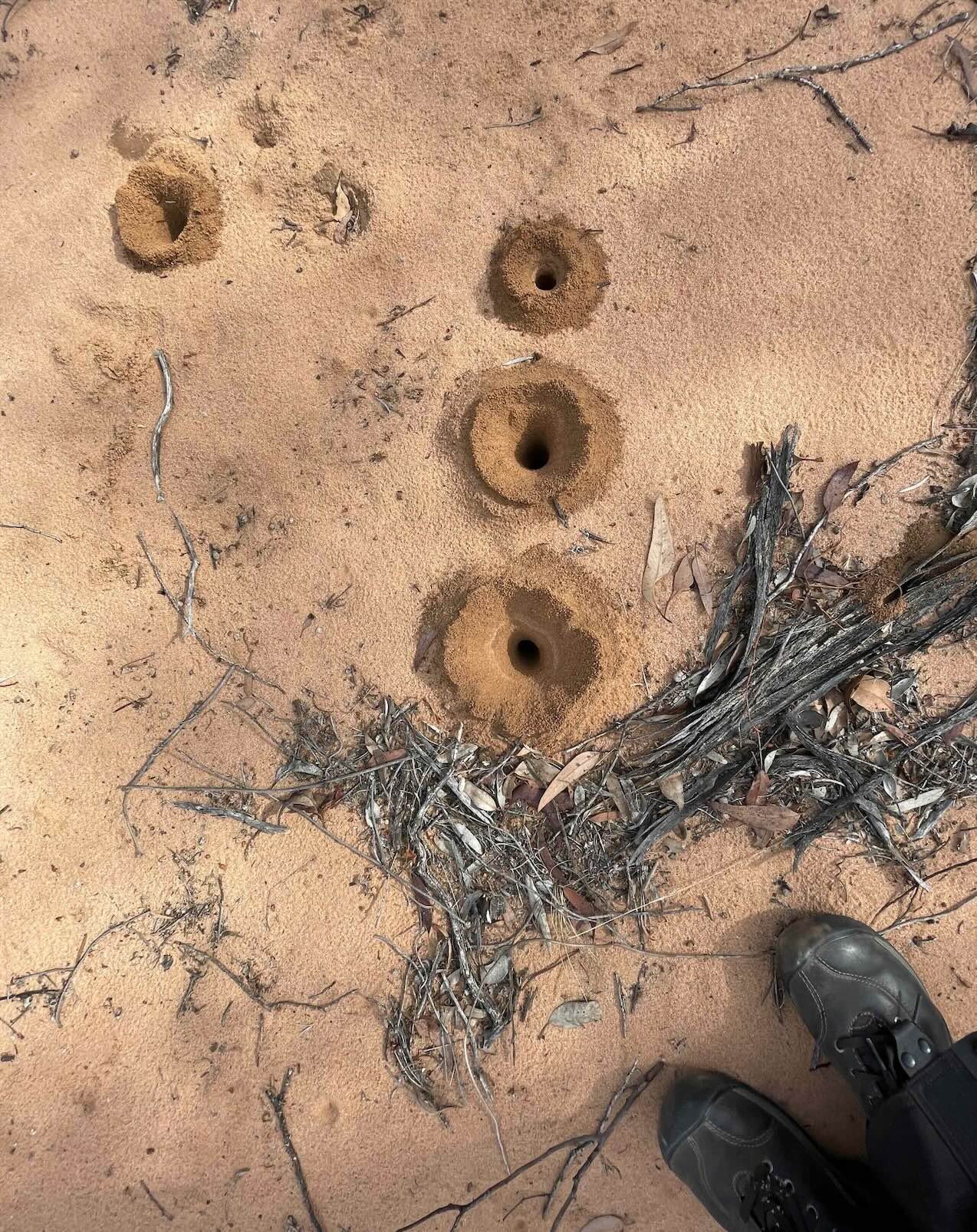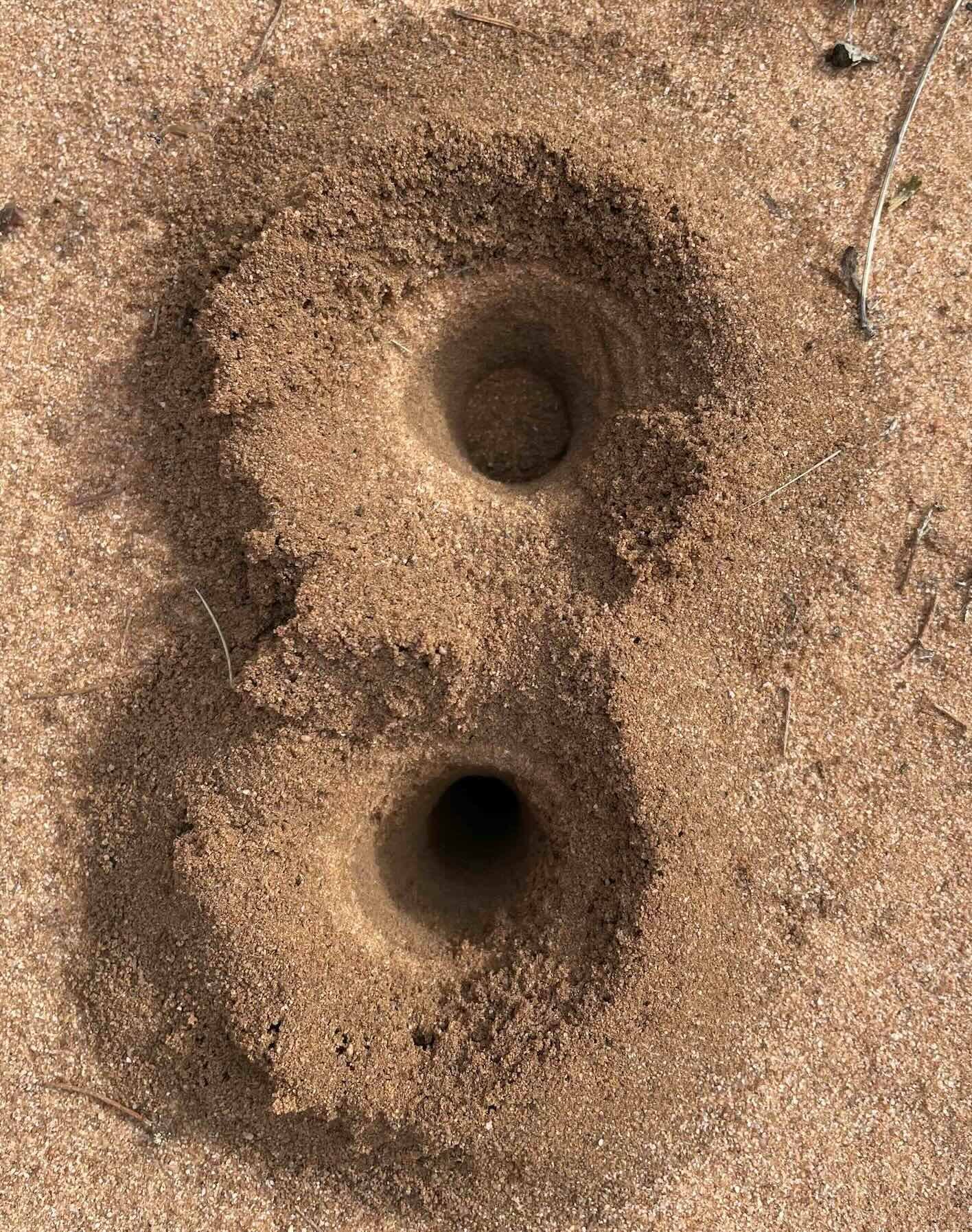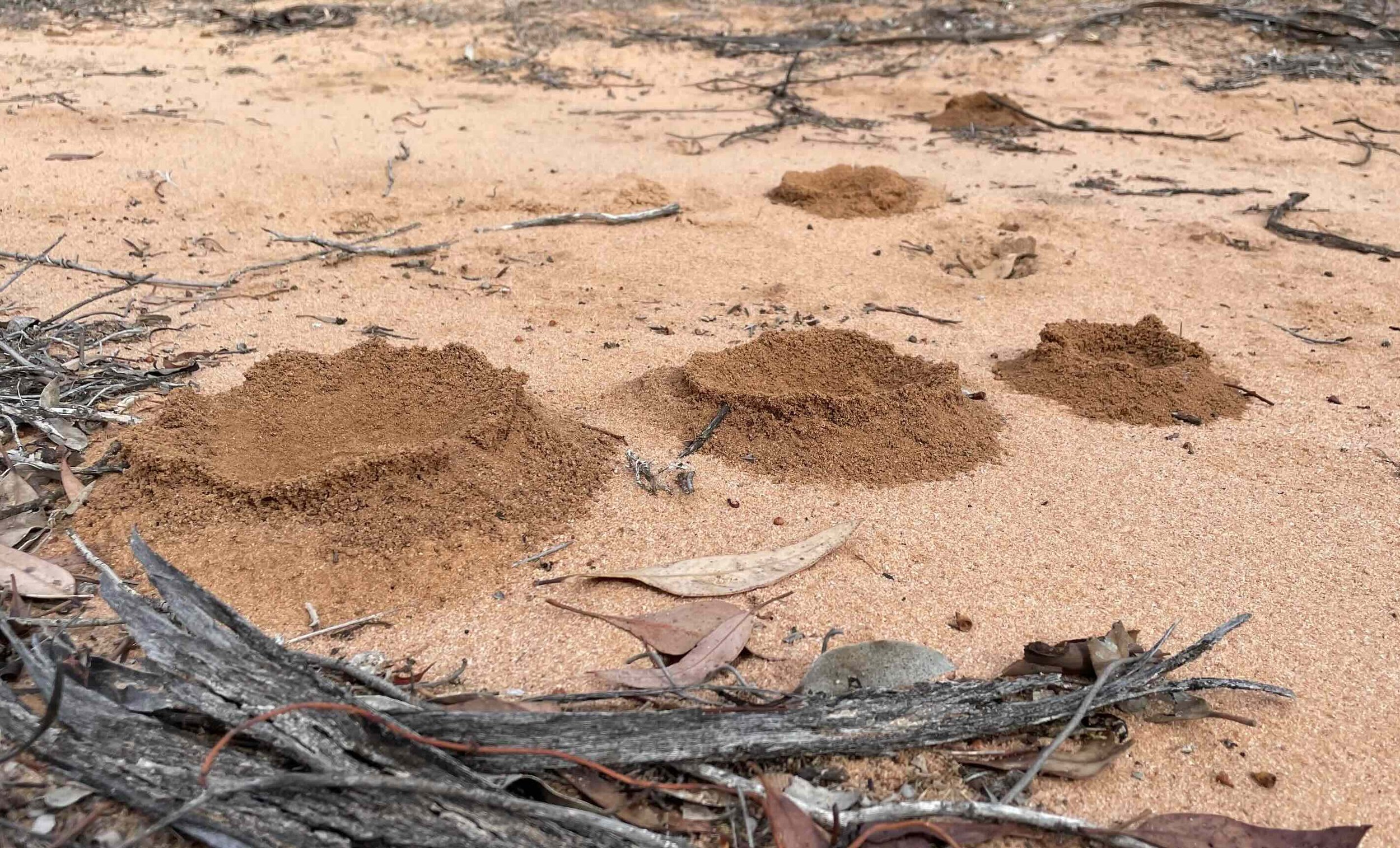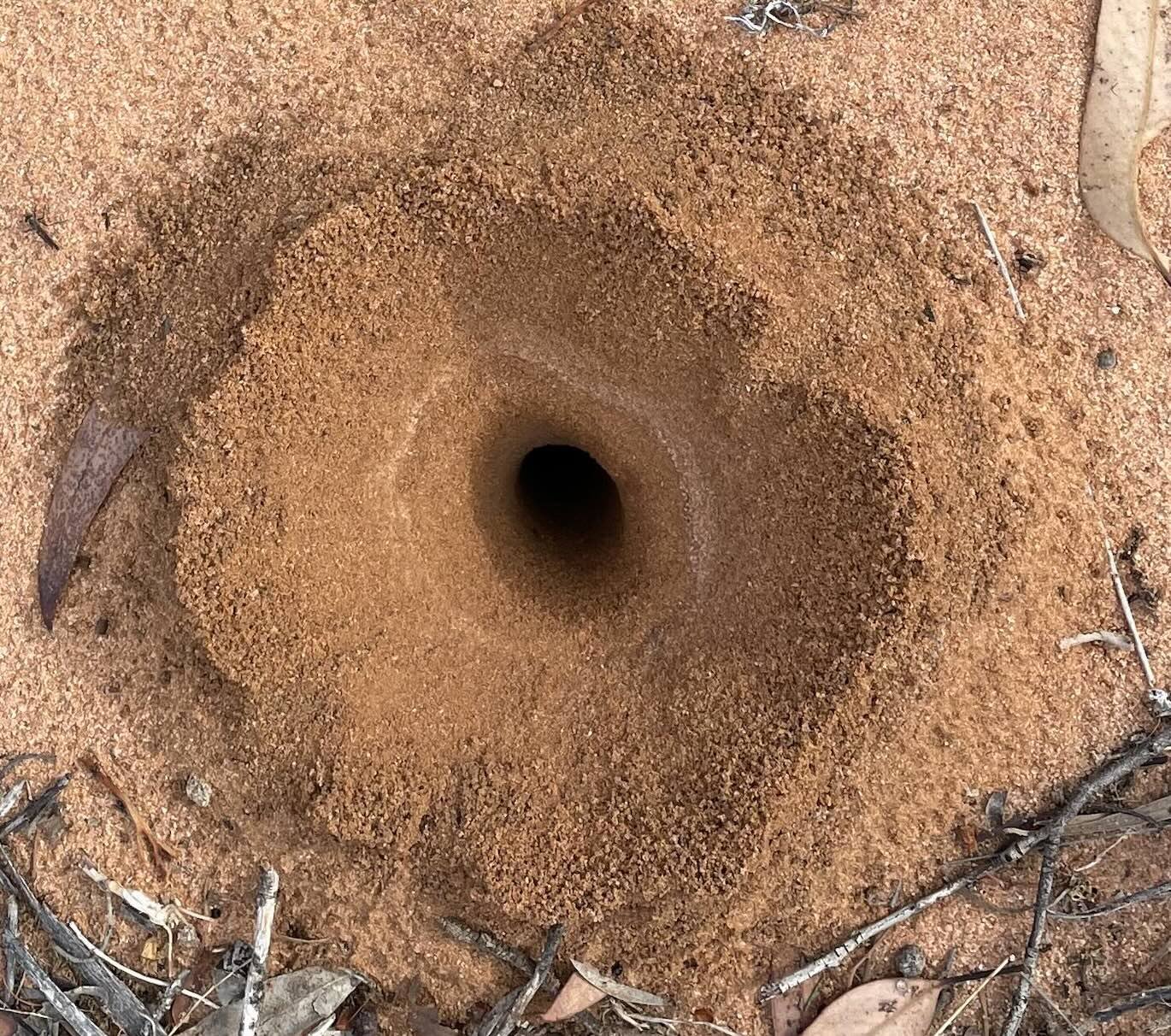
These distinctive, funnel-shaped nests are instantly identifiable as the work of Aphaenogaster ants.

They are large mounds, with very wide, round openings. Here my shoes provide scale (and I don't have small feet!)

Wandering insects that climb the outer wall are likely to fall directly into the opening ... and become food for colony. I'm not sure why one of these was closed. Perhaps an landslide caused by a passing large animal (not me!). Or maybe the ants sometimes close the burrow from within. A bit of a mystery, for now.

This species is typically found in habitats with at least some trees and shrubs, such as Callitris and mulga (Acacia) woodlands, and mallee (ref. 8). That fits with where I saw these ants, along a trail through quite dense bush.

Many mounds ... but not an ant in sight! Apparently this is quite typical for Aphaenogaster (ref. 8). Colonies may be quite large, yet workers are seldom seen above ground ... and even those that venture out do not go far from home. These ants don't need to forage. They tend aphids feeding on plant roots and/or they just wait for food to fall tumble in through the funnel.

Late in the day I came across a large funnel with several workers active at the surface. I collected one for identification.
Australia has eight species of these 'funnel ants'. Aphaenogaster barbigula is found in semi-arid parts of eastern Australia ... including north-western Victoria (ref. 8). The arrangement of hairs beneath the head is a clue to the species identity.






